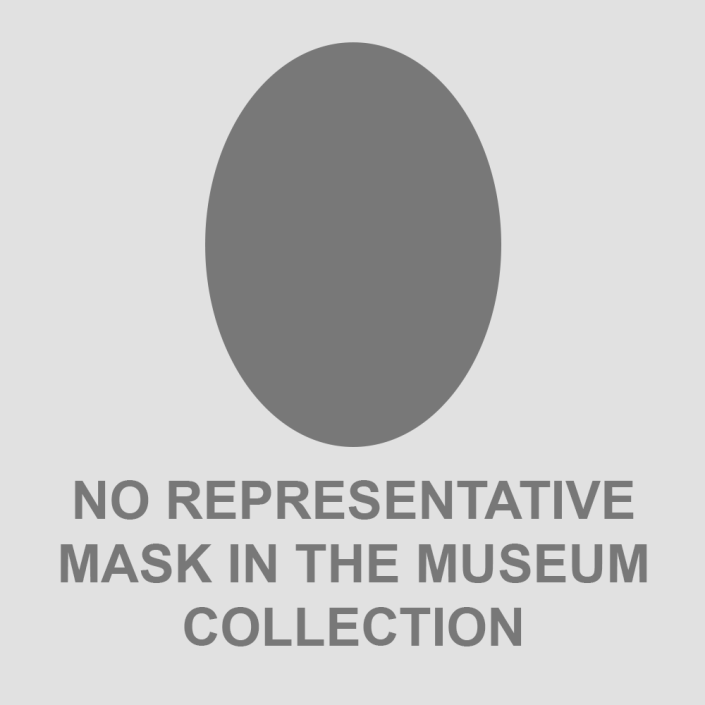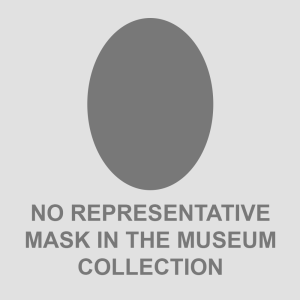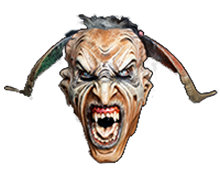TITLE: Tschäggättä Mask
TYPE: face mask
GENERAL REGION: Europe
COUNTRY: Switzerland
SUBREGION: Valais
ETHNICITY: Swiss
DESCRIPTION: Tschäggättä Mask
CATALOG ID: N/A
MAKER: N/A (Lötschental Valley)
CEREMONY: Tschäggättä (Carnival)
AGE: N/A
MAIN MATERIAL: wood
OTHER MATERIALS: N/A
Fasnacht is what the Swiss call Carnival, but in the Lötschental Valley, the related celebration is referred to as Tschäggättä. The masqueraders wear frightening wood masks, often with large teeth and horns, and suits of animal skins, with cowbells arond their waists. The Tschäggättä come down from the mountains and parade through the local villages, frightening and playing pranks on anyone they meet.
An apocryphal story tried to explain the practice as arising from poor villagers on the shady side of the valley, who would allegedly put on masks to steal food from their more prosperous neighbors on the sunny side. In reality, the original ceremony was a pre-Christian ritual to scare away the winter, similar to those practiced throughout central Europe. With the proselytization of Switzerland, the tradition was merged with the Carnival tradition, and the anonymity of masquerade gave young men the chance to break social conventions and flirt with girls. In modern practice, women as well as men participate in the ritual.
Unfortunately, the best book on Swiss masking traditions is available in German only: Albert Bärtsch, Holzmasken: Fasnachts- und Maskenbrauchtum in der Schweiz, in Süddeutschland und Österreich (AT Verlag 1993).
Tourist masks from Lötschental are fairly common, but genuine cultural masks are very rare. The Museum’s collection currently includes no representative example of a Tschäggättä mask.






